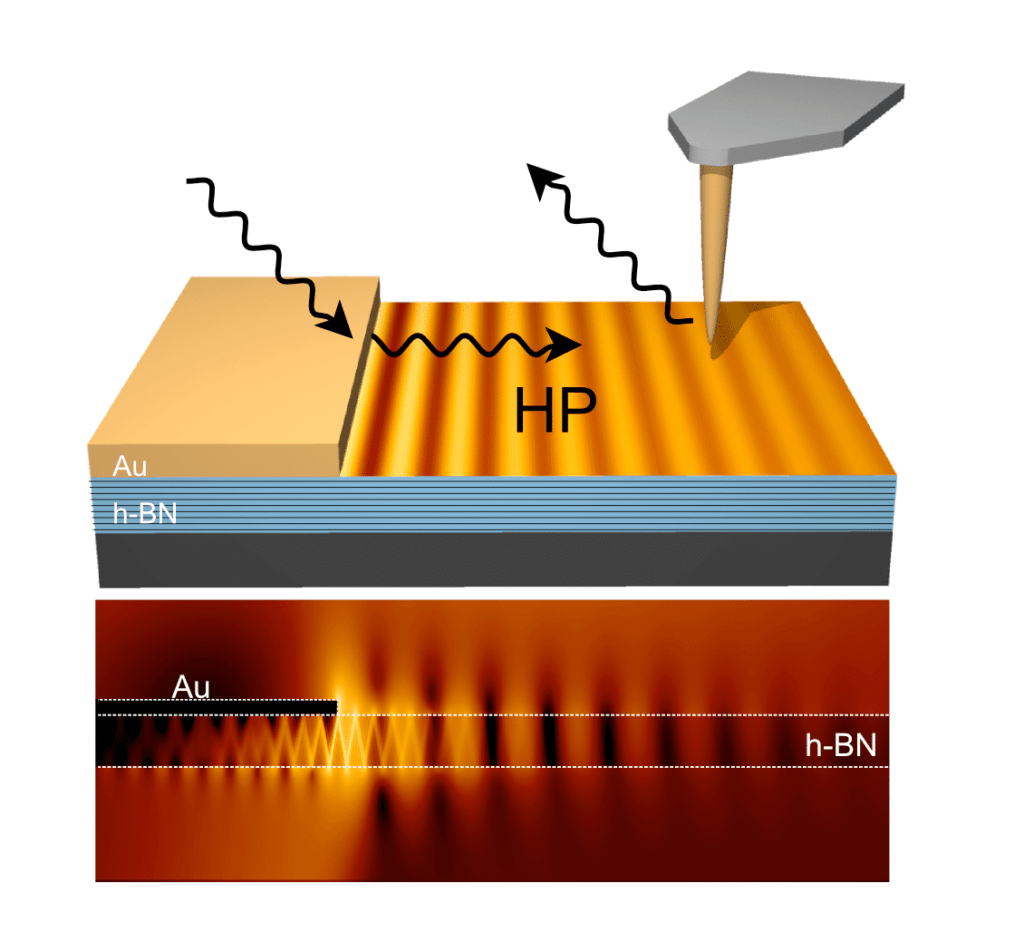- Application description
- neaSCOPE product line
Among other interesting applications, the neaSCOPE microscopes can be used to visualize how light moves in time and space within an exotic class of materials known as hyperbolic materials. For the first time, it was possible to observe ultra-slow pulse propagation and back-propagating waves in plates of boron nitride: a natural hyperbolic material for infrared light.

Hyperbolic materials (e.g., boron nitride, 135 nm thick) are very special because they act as metal in one direction and as insulator in the other. Light travels in them in a form we call a polariton, and is in fact associated with the vibrations of matter itself. Until now, these materials have been used to produce complex nanostructures that enable subwave measurements, as well as nanoscale focusing and control. However, in order to fully exploit their potential, it is necessary to analyze them and understand how light behaves in them.
NeaSNOM creates a basis for studying the precise way in which light propagates through complex optical systems on a sub-wavelength scale with an extremely high level of detail. The ability of microscopes to measure the propagation of light in matter at the nanoscale is crucial for the future development of nanophotonic and other highly sophisticated devices.
Polaritons, on the one hand, push light into much smaller volumes than it is normally possible. That is useful for a wide range of applications that require light handling in small spaces, such as the detection and identification of individual molecules. On the other hand, this highly specific limitation means that special techniques need to be developed in order to monitor their behavior. For this reason, it is convenient to use the strong properties of the neaSNOM microscope in combination with ultrashort pulses.